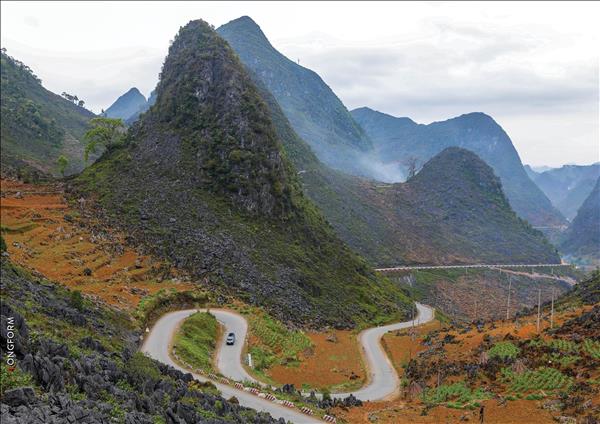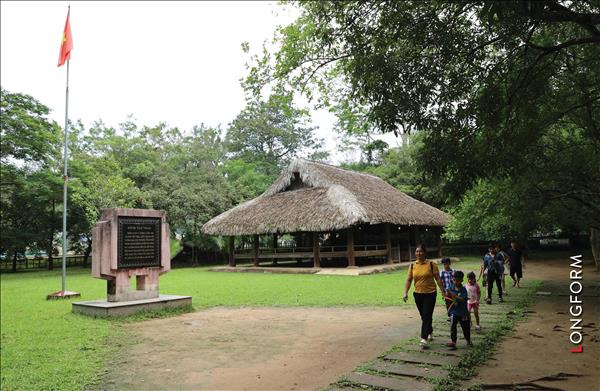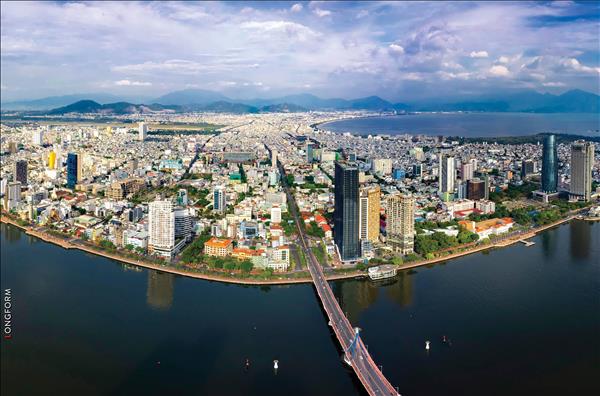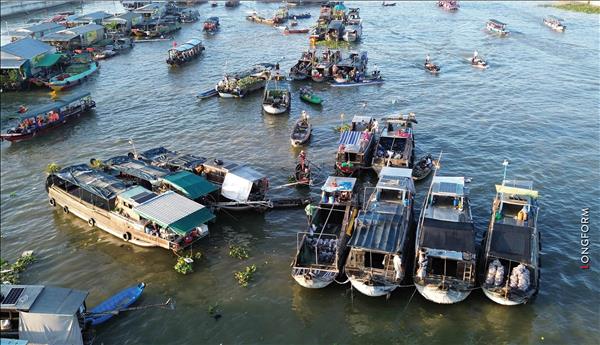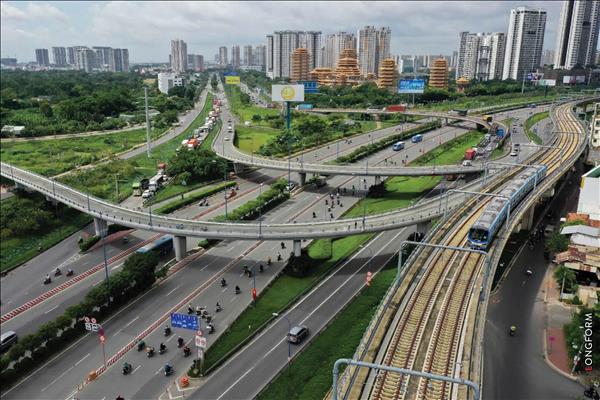Spotlights in the south
The operation of Vietnam’s first wind power plant in Bac Lieu in 2013 marked a milestone in the energy sector’s development of clean and sustainable energy.
Located in the coastal commune of Vinh Trach Dong, Bac Lieu, the plant, an investment of the Cong Ly Trade and Tourism Company Ltd., had only 10 wind turbines when it was put into operation.
When we went back to the plant this year, the number of wind turbines has increased to 62 with a total capacity of 99 MW, which can annually generate around 320 million kWh. All wind turbine towers are installed at sea, each of which has a capacity of approximately 1.6 MW.
The turbines, supplied by General Electric (GE), are made of special stainless steel, each with a height of 80m and a weight of 200 tons. The 20m-long propellers are made of special plastic and are automatically controlled to fold up to avoid damage upon occurrence of storms.
Following the success of the first wind power plant in Bac Lieu, many wind and solar power projects have been built in southern Vietnam.
One of these projects is a wind and solar power complex in Ninh Thuan, a southern central province which has both wind and sunlight. Built in 2016 by the Trungnam Group, the 264ha complex has 700,000 solar panels with a total expected capacity of 204 MW. The complex’s solar power plant, the largest of its kind in Vietnam, was completed and connected to the national electric grid in April, said Trungnam General Director Nguyen Tam Tien.
In this complex, Trungnam will also install 45 wind power towers, each about 100m high with 50m-long propellers. The towers will be installed in three phases and have a total capacity of 90-100 MW.
Energy on the roofs
We left wind and solar power farms for Vung Tau. The coastal southern city boasts hundreds of solar power works which are installed on roofs.
The Ba Ria Vung Tau Power Company is leading the city in using solar energy. The company has installed more than 100m2 of solar panels on the roofs of its office buildings in Vung Tau, supplying more than 50% of the electricity for the company’s offices. The remaining electricity is supplied to the national electric grid.
Deputy Director Tran Thanh Hai said the company has annually saved between 400-500 million dong (roughly 17,400-21,740 US dollars) after installing the solar power system.
Pham Quynh, owner of Hong Thanh resort in Vung Tau, said that he installed solar panels at his resort where solar-powered shuttle buses are also used. As an engineer, Quynh has imported and installed the solar panels himself, largely lowering the costs.
Ho Chi Minh City is also applying this clean energy model effectively. By early 2019, nearly 1,000 families, public offices and enterprises in the city had installed solar panels on their roofs with a total capacity of 11,382 kWp. Some of these are the Phu Dien Trade and Construction Investment Joint Stock Company’s wastewater treatment plant with a capacity of 980 kWp; Schneider Electric Manufacturing Vietnam with 360 kWp; and the Phu Tho Tourist Service Joint Stock Company with 259 kWp. Since April, the municipal electricity authority has officially bought electricity from families which have not used up their solar power.
The state’s incentive policies have encouraged the investment in and development of wind and solar power which have initially had fruitful results.
The operation of Vietnam’s first wind power plant in Bac Lieu in 2013 marked a milestone in the energy sector’s development of clean and sustainable energy.
|
The capacity of wind power in Vietnam is set to reach 800 MW by 2020, or 0.8% of the total electricity needs; 2,000 MW by 2025 and 6,000 MW by 2030.
Source: Ministry of Industry and Trade
|
When we went back to the plant this year, the number of wind turbines has increased to 62 with a total capacity of 99 MW, which can annually generate around 320 million kWh. All wind turbine towers are installed at sea, each of which has a capacity of approximately 1.6 MW.
The turbines, supplied by General Electric (GE), are made of special stainless steel, each with a height of 80m and a weight of 200 tons. The 20m-long propellers are made of special plastic and are automatically controlled to fold up to avoid damage upon occurrence of storms.
|
The Bac Lieu wind power plant now has 62 wind turbines with a total capacity of 99 MW. Photo: Cong Dat/VNP 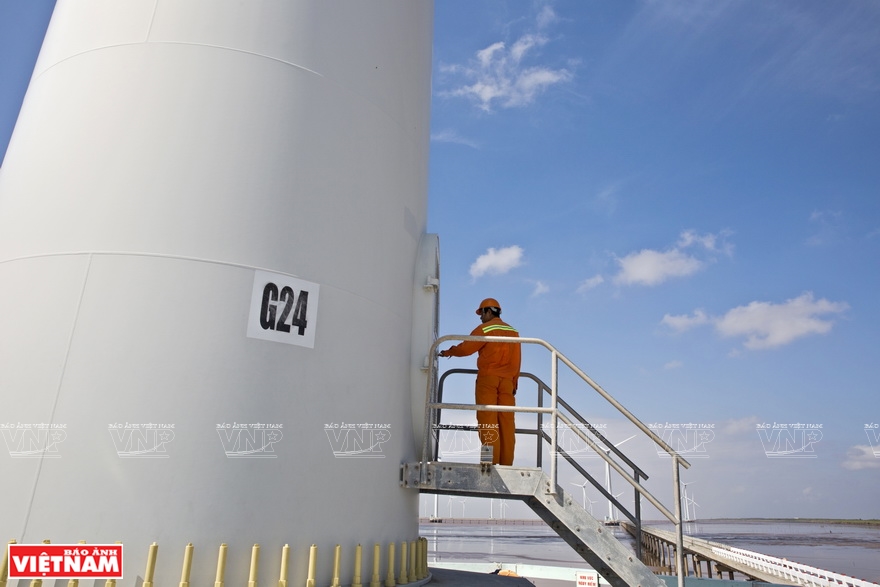 Each wind turbine of the Bac Lieu wind power plant has a technical control room. Photo: Thong Hai/VNP A technician checks the operation of a turbine. Photo: Cong Dat/VNP  The wind farm in Bac Lieu generates about 320 million kWh/year. Photo: Tat Son/VNP  The platform of a wind turbine for the wind and solar power project in the south central province of Ninh Thuan. Photo: Thong Hai/VNP 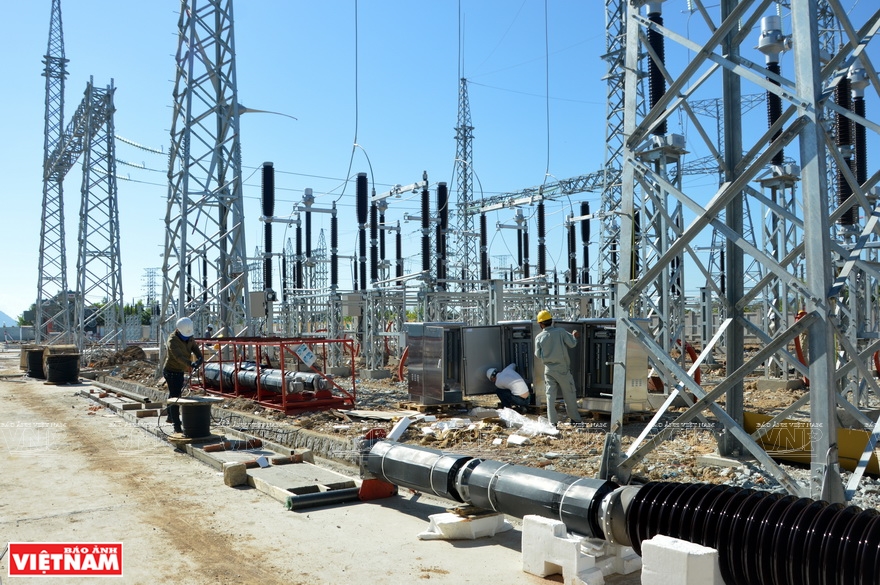 The electric grid of the wind and solar power complex in Ninh Thuan is connected to the national grid. Photo: Trung Nam group 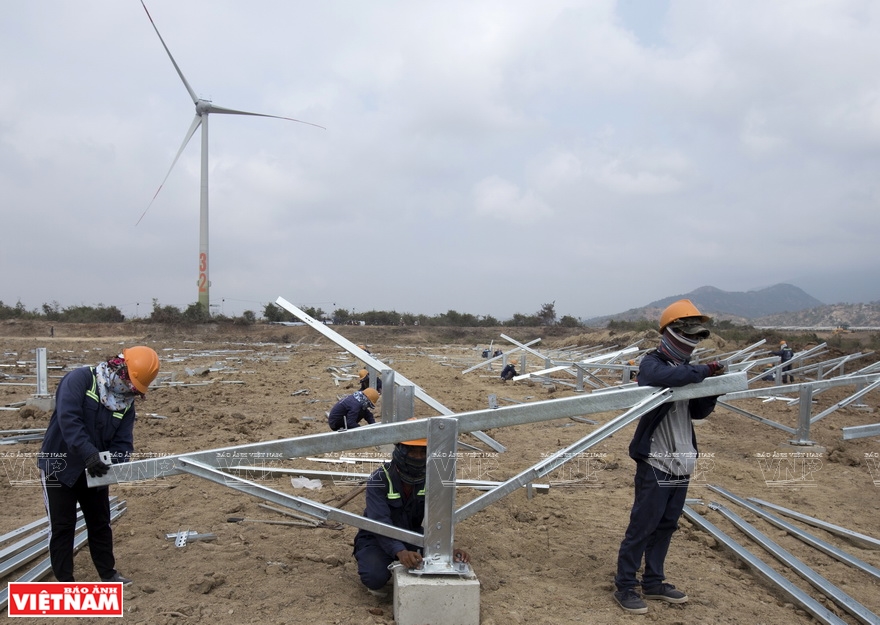 The project has 700,000 solar panels with an expected capacity of 204 MW. Photo: Thong Hai/VNP Assembling the last solar panels in the first phase of the wind and solar power project in Ninh Thuan. Photo: Thong Hai/VNP 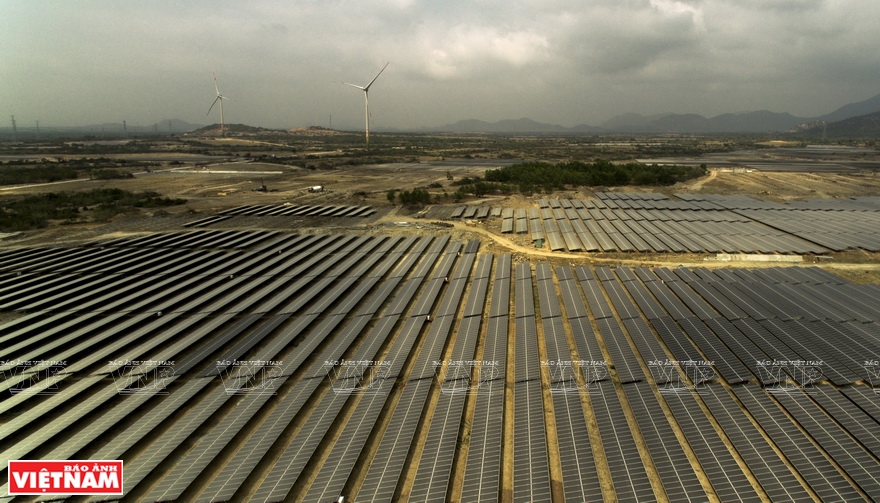 The project, on an area of 264ha, is the only one in Vietnam combining wind and solar power plants. Photo: Thong Hai/VNP |
|
“The Government of Vietnam has addressed a number of legal issues on wind power. This will help develop the wind power sector, bringing economic and environmental benefits for the country and making it an attractive investment destination for international organizations and investors.”
Steve Sawyer, Secretary General, Global Wind Energy Council (GWEC)
|
One of these projects is a wind and solar power complex in Ninh Thuan, a southern central province which has both wind and sunlight. Built in 2016 by the Trungnam Group, the 264ha complex has 700,000 solar panels with a total expected capacity of 204 MW. The complex’s solar power plant, the largest of its kind in Vietnam, was completed and connected to the national electric grid in April, said Trungnam General Director Nguyen Tam Tien.
In this complex, Trungnam will also install 45 wind power towers, each about 100m high with 50m-long propellers. The towers will be installed in three phases and have a total capacity of 90-100 MW.
Energy on the roofs
We left wind and solar power farms for Vung Tau. The coastal southern city boasts hundreds of solar power works which are installed on roofs.
The Ba Ria Vung Tau Power Company is leading the city in using solar energy. The company has installed more than 100m2 of solar panels on the roofs of its office buildings in Vung Tau, supplying more than 50% of the electricity for the company’s offices. The remaining electricity is supplied to the national electric grid.
|
About 1,000 households and offices in Ho Chi Minh City have had solar panels installed on their roofs. Photo: Cong Dat/VNP 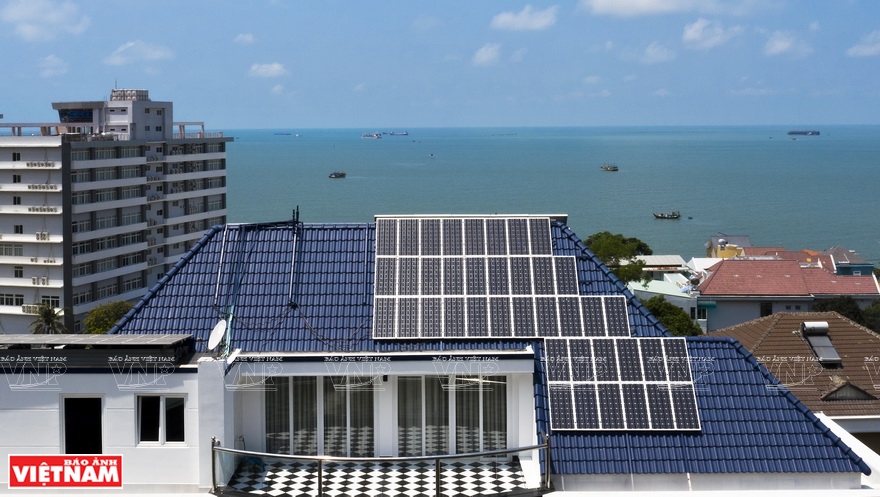 Many households and offices in Vung Tau install solar power systems to reduce the national grid’s load. Photo: Tat Son/VNP  The solar power control system in Vung Tau. Photo: Tat Son/VNP  A solar powered shuttle bus invented by Pham Quynh, owner of Hong Thanh resort. Photo: Thong Hai/VNP |
Deputy Director Tran Thanh Hai said the company has annually saved between 400-500 million dong (roughly 17,400-21,740 US dollars) after installing the solar power system.
Pham Quynh, owner of Hong Thanh resort in Vung Tau, said that he installed solar panels at his resort where solar-powered shuttle buses are also used. As an engineer, Quynh has imported and installed the solar panels himself, largely lowering the costs.
| Ninh Thuan is leading the country in wind power development with 12 wind power projects, four of which are being implemented at present. |
The state’s incentive policies have encouraged the investment in and development of wind and solar power which have initially had fruitful results.
Story: Tat Son - Photos: Cong Dat, Tat Son & Thong Hai

